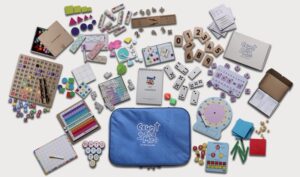Scared of math? Madras Dyslexia Association’s toolkit makes it easy and fun to learn
Developed after three decades of working with children who learn differently, the kit is already being used in 50 Chennai schools.
While the kit was initially created to support students with developmental dyscalculia and math learning difficulties, it has also proven to be a powerful learning resource for all students, making mathematics joyful, accessible, and deeply meaningful.

Read more about it HERE
- Master Arithmetic with Tools at Home https://PracticalMathHelp.com
- Dyscalculia news and podcasts http://DyscalculiaHeadlines.com
- Dyscalculia for Dyslexia tutors transition training https://dys4dys.org
- Dyscalculia Services https://DyscalculiaServices.com
- Dyscalculia Awareness Training https://DyscalculiaAware.org
- Help you child with math homework https://MomsTeachMath.com
- Math and Dyscalculia Screening test https://DyscalculiaTesting.com
- Dyscalculia Screener https://DyscalculiaScreener.org
- Adult Dyscalculia https://AdultDyscalculia.org
- Become a Dyscalculia Tutor http://DyscalculiaTutorTraining.org
- Ask a question at https://Dyscalculia.ai
